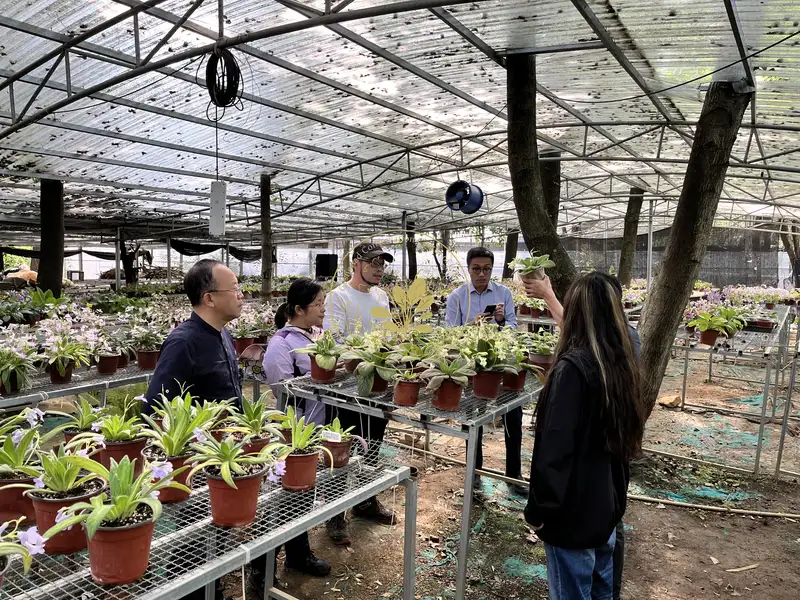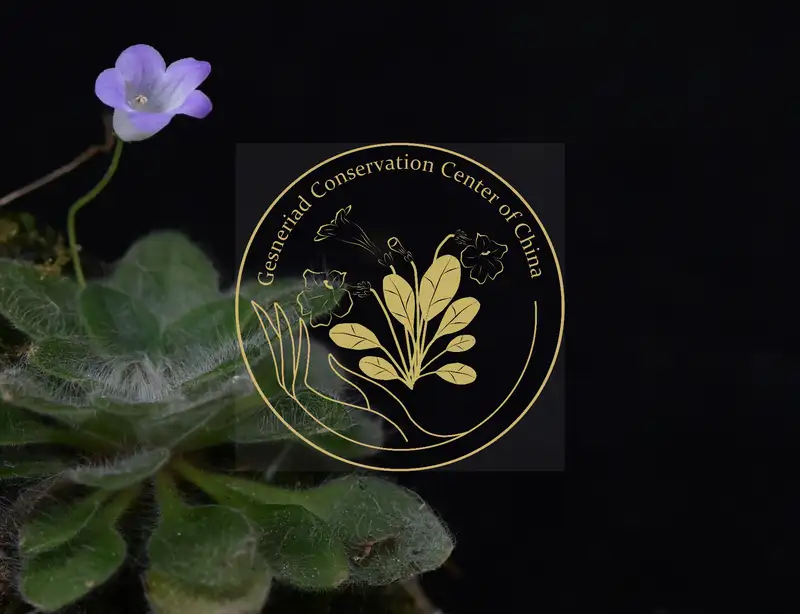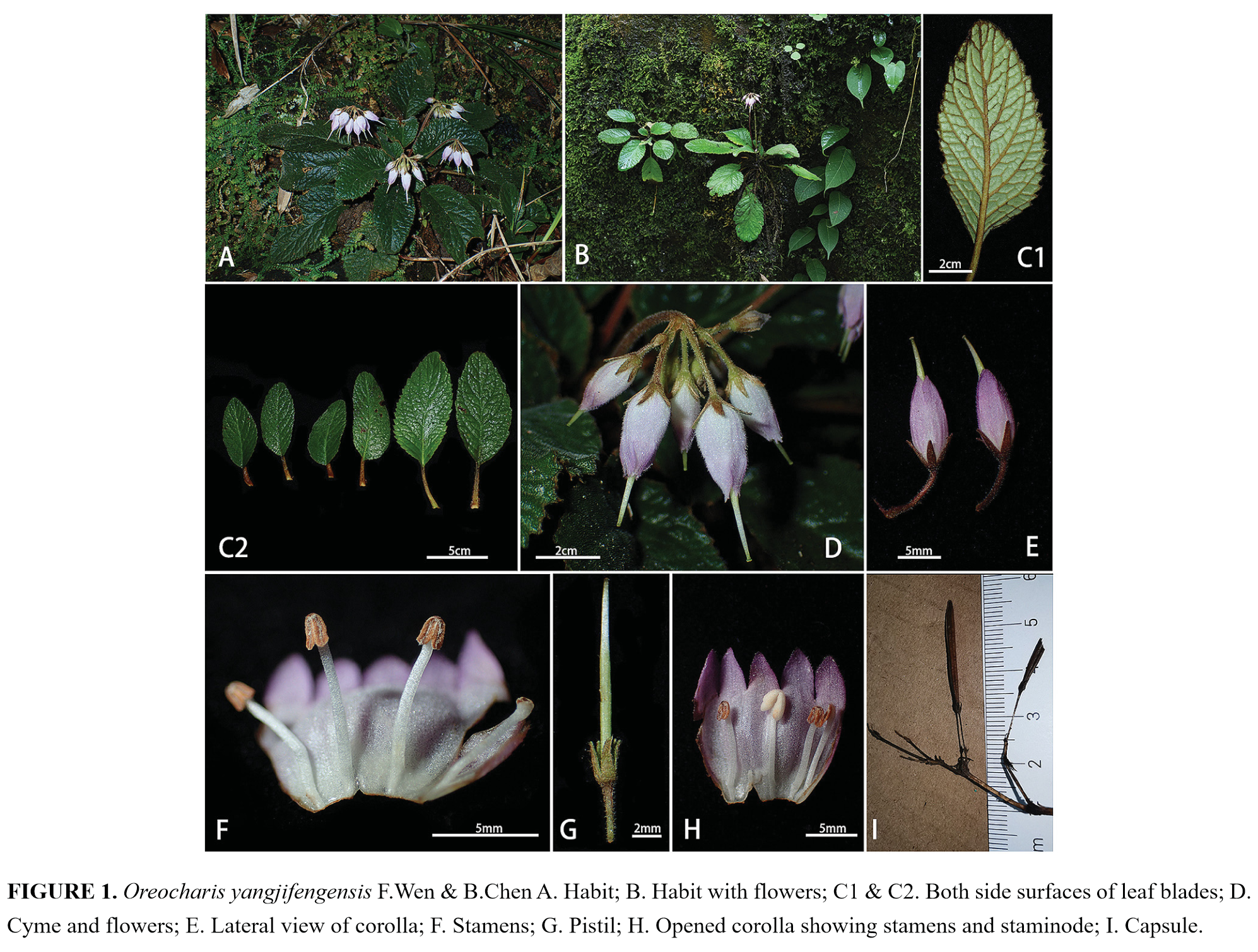No. 1 Yi-Gang Wei, Fang Wen, Bo Zhao & Shun-Zhi He: Anna rudibiflora (Gesneriaceae), a new species from Guizhou, the southern part of China.
Plant Ecology and Evolution 146 (2): 203–211.
ABSTRACT
A new species, Anna rubidiflora S. Z. He, F.Wen & Y.G.Wei, a stenochoric species from the southern part of China (Kaiyang county of Guizhou province), is described and A new species, Anna rubidiflora S. Z. He, F.Wen & Y.G.Wei, a stenochoric species from the southern part of China (Kaiyang county of Guizhou province), is described and illustrated. It differs from the morphologically similar species A. ophiorrhizoides (Hemsl.) Burtt & Davidson by being a larger plant with undivided stem, its entire leaf blade margins, its abaxial greenish-white leaf blades with slightly purple nerves, its obovate-lanceolate calyx lobes with truncate and nearly rounded apex without nerves, and its reddish-purple corolla. The newly described species is illustrated both by a line drawing and photographs. A locality and distribution map is also presented. A phylogenetic analysis confirmed that A. rubidiflora is a member of Anna and a close relative of A. ophiorrhizoides.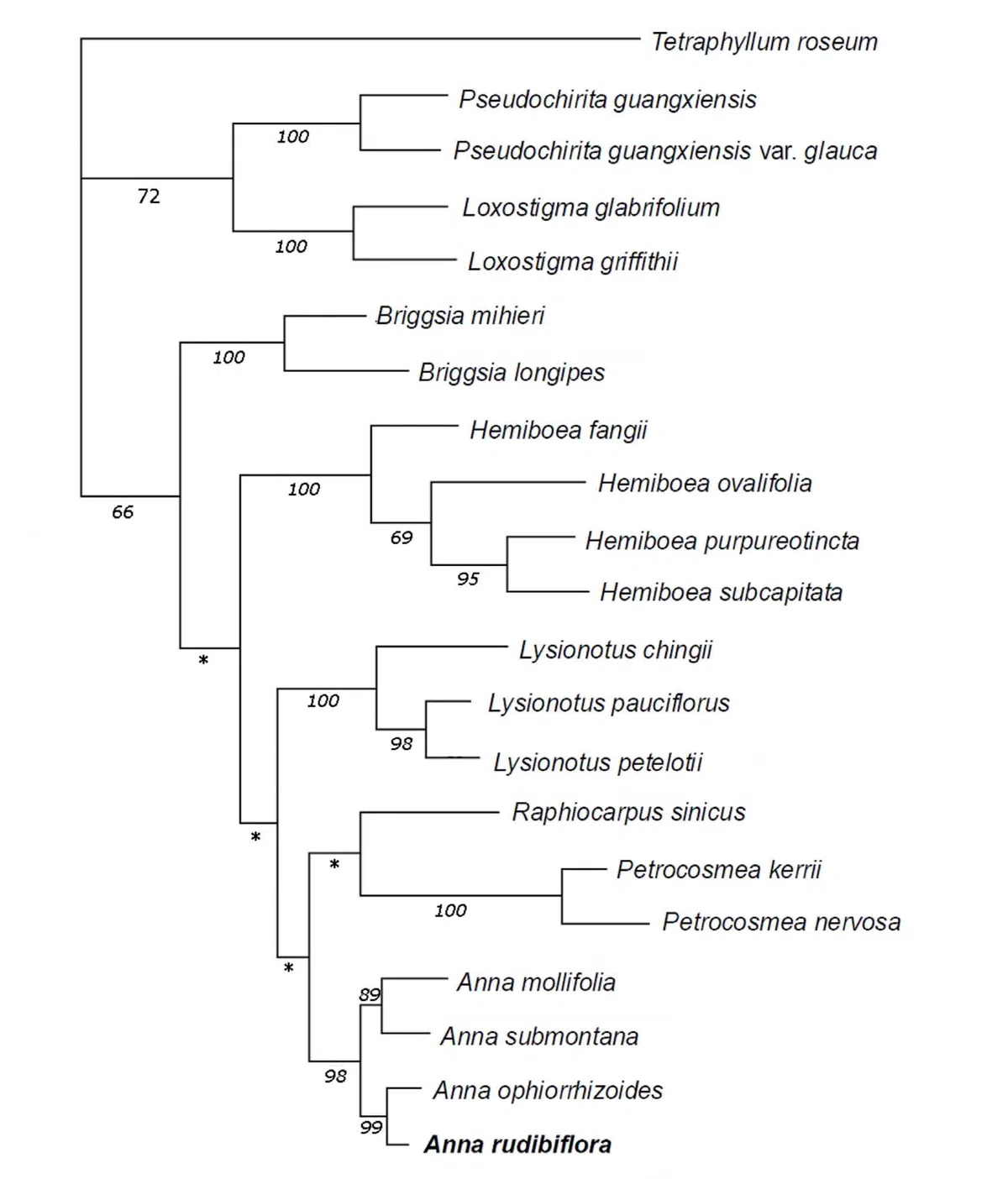
FIGURE 1. Phylogram of the single most parsimonious tree resulting from a maximum parsimony (MP) analysis of combined ITS and trnL-F data. Numbers above and below branches indicate branch lengths in steps and bootstrap values > 50% respectively. * indicates branches with bootstrap values < 50%. No. 2 Fang Wen, Bo Zhao, Gui-You Liang & Yi-Gang Wei: Primulina lutvittata (Gesneriaceae), a new species from a limestone cave in Guangdong, China. Ann. Bot. Fennici 50: 87–90 No. 3 Wei-Bin Xu, Yan Liu, Yoshiko Kono, Hsuan Chang, Ching-I Peng & Kuo-Fang Chung: Primulina cardaminifolia (Gesneriaceae), a rare new species from limestone areas in Guangxi, China. FIGURE 2. Primulina cardaminifolia Yan Liu & W.B. Xu. A, Leaves; B, Flowers; C, Flower side view; D, Flower face view; E, Cyme; F, Habit. Above-mentioned two figures were cite from Xu et al., 2013. No. 4 Yun-Hong Tan, Jian-Wu Li, Bo Pan, Bin Wen, Jian-Tao Yin & Qiang Liu: Oreocharis glandulosa, a new species of Gesneriaceae from southern Yunnan, China. A new species of Gesneriaceae, Primulina beiliuensis B.Pan & S.X.Huang from limestone areas in Guangxi, China, is described and illustrated here. The new species is morphologically similar to P. lutea (Yan Liu & Y.G. Wei) Mich. Möller & A. Weber in its habit and leaf form, etc., but easily differs the latter in its leaf blades broadly ovate, base nearly cordate, margin shallowly obtuse-dentate or shallowly undulate-serrate, corolla purple, corolla, peduncle, bracts and calyx lobes outsides, pedicel with purple pubescence. Molecular evidences hint that it is systematically similar to P. repanda var.guilinensis (W.T. Wang) Mich. Möller & A. Weber, but the morphologies of two relatives are obviously different. A new species, Primulina qingyuanensis from Guangdong, China, is described and illustrated. It is similar to P. bicolor (W.T. Wang) Mich. Möller & A. Weber, but differs from P. bicolor by several morphological characters, both vegetative and reproductive.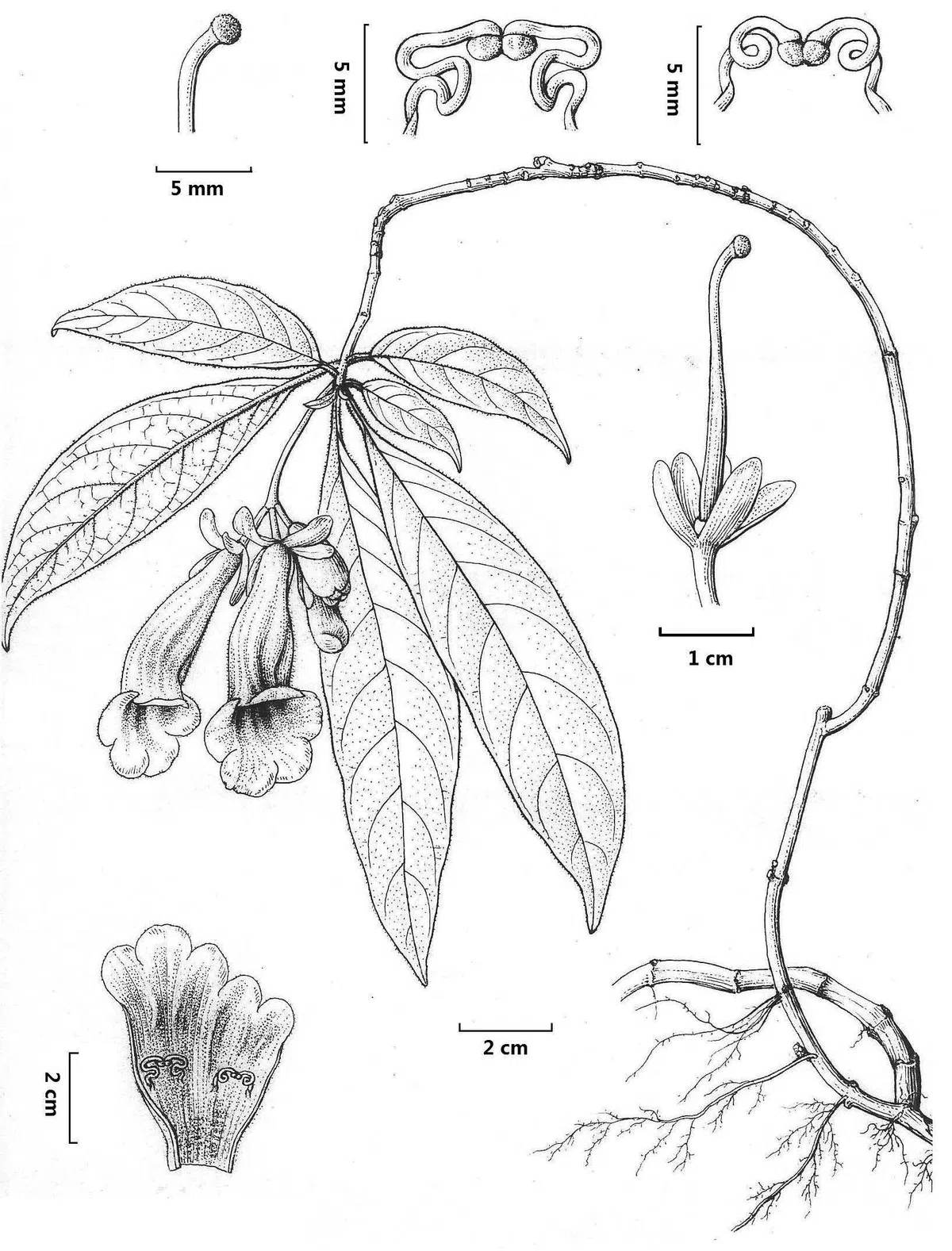
FIGURE 2. Anna rubidiflora S.Z.He, Fang Wen & Y.G.Wei: A, habit; B, corolla opened to show stamens and staminodes; C, calyx and pistil; D, stigma and part of style; E, stamens; F, staminodes. Drawn by S.Q.He. Scale bars: A & B = 2 cm; C = 1 cm; D–F = 5 mm.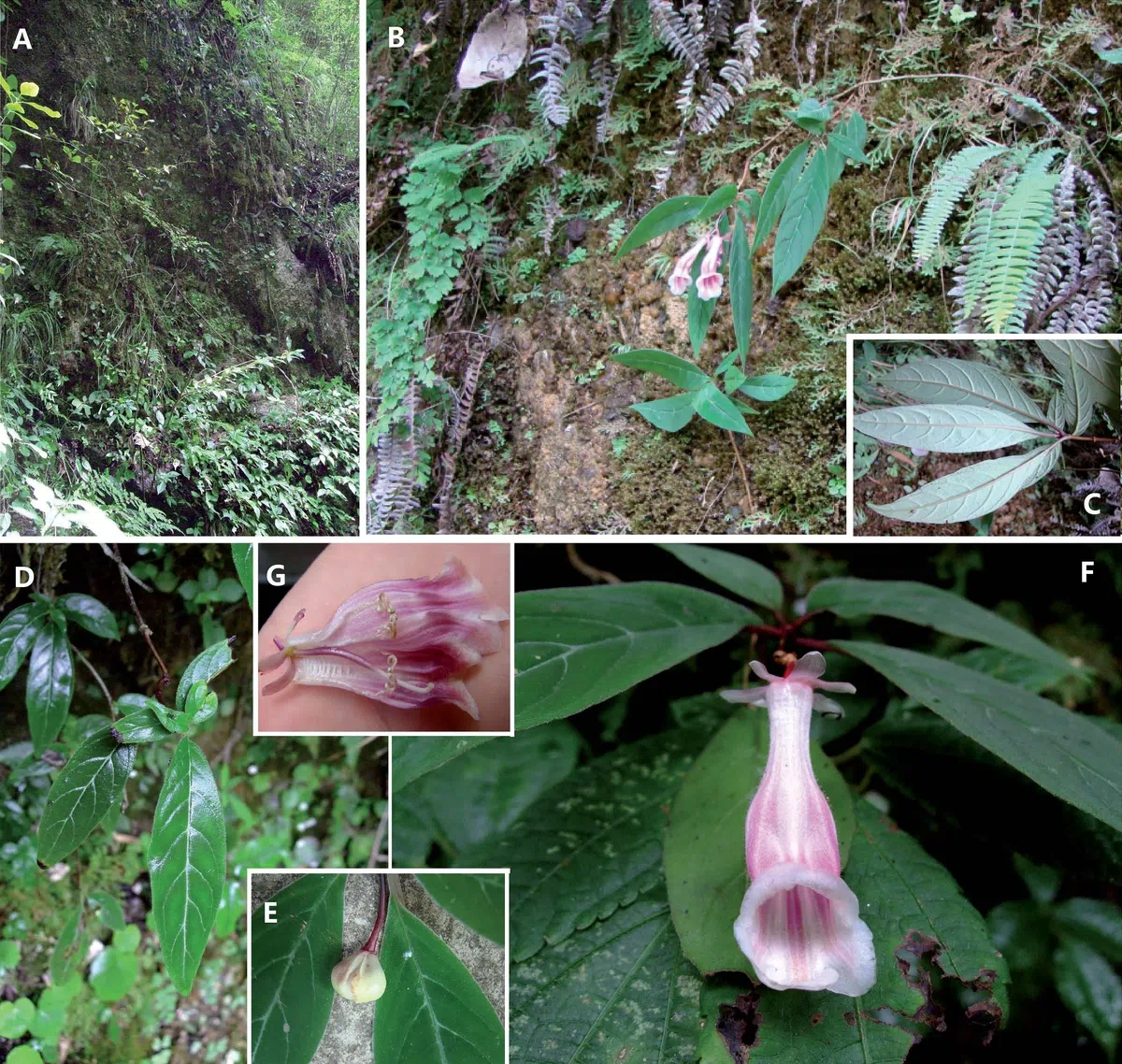
FIGURE 3. Photographs of Anna rubidiflora S.Z.He, Fang Wen & Y.G.Wei at the type locality: A, habitat; B, stem with leaves and flowers; C, back of leaves; D, leaves; E, bracts; F, front view of flower; G, longitudinally opened flower showing stamens, staminodes and pistil.
Above-mentioned three figures were cited from Wei et al., 2013.
ABSTRACTPrimulina lutvittata Fang Wen & Y.G. Wei, a new species of Gesneriaceae from Guangdong, China, is described and illustrated. It is morphologically similar to P. fengshanensis , but differs by several characters of the leaves, cymes, bracts, corollas and anthers.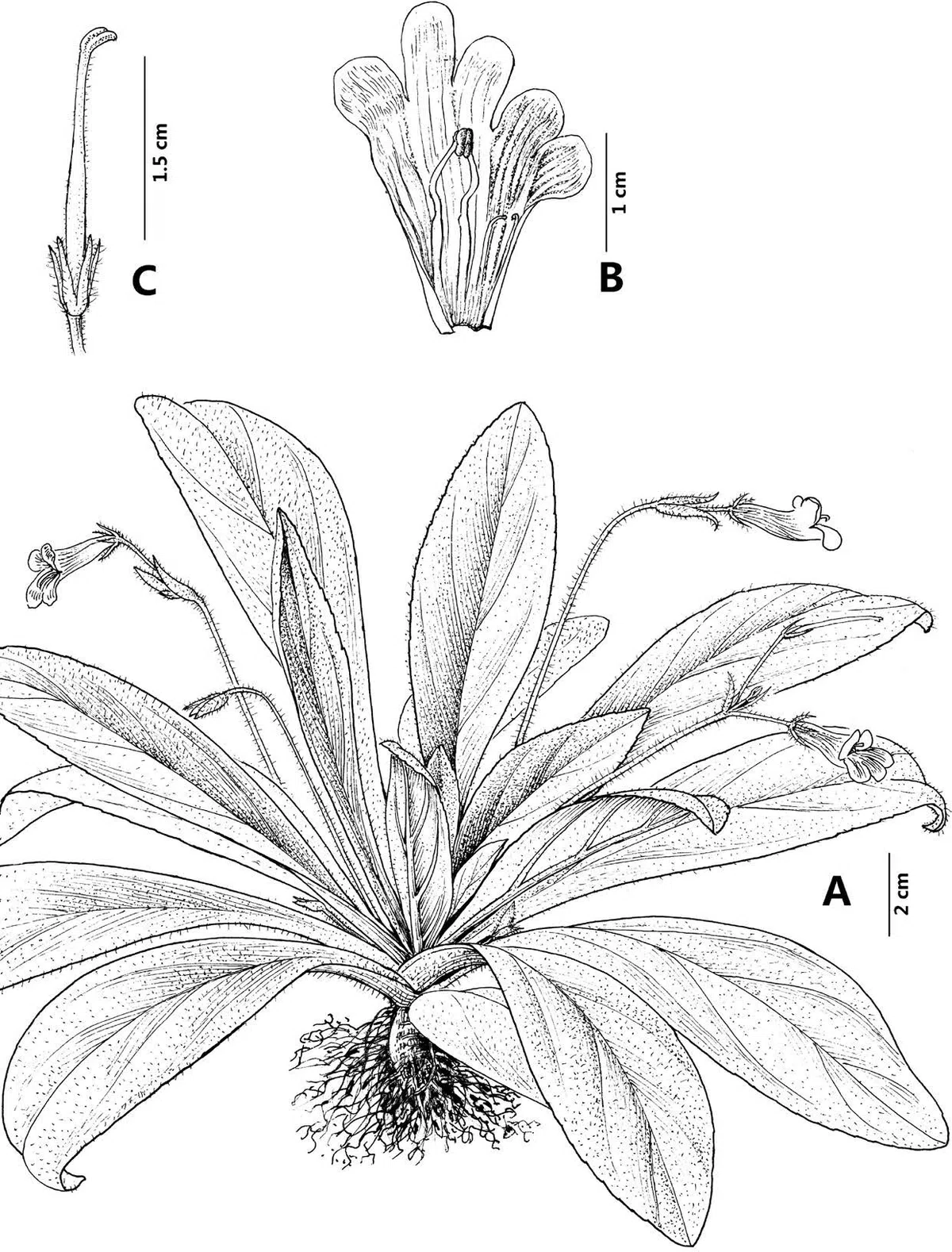
FIGURE 1. Primulina lutvittata (from the holotype, drawn by W.H. Lin). — A: Habit. — B: Corolla opened, showing stamens and staminodes. — C: Calyx and pistil.
Above-mentioned figure was cited from Wen et al., 2013.
Botanicals Studies, 54: 19-28.
ABSTRACTBackground: Primulina cardaminifolia Yan Liu & W.B. Xu (Gesneriaceae), a distinct new species with imparipinnate leaves, is described and illustrated from a limestone valley in Guangxi Zhuangzu Autonomous Region, China. To assure its generic placement and phylogenetic affinity, phylogenetic analyses were performed using DNA sequences of nuclear ITS and chloroplasttrnL-F intron spacer region. Additionally, somatic chromosome number was counted and pollen stainability was tested.
Results: Phylogenetic analyses support its placement in Primulina; however, two phylogenetically distinct ITS sequence types were detected, suggesting a probable hybrid origin. Its pollen stainability is 100% and its chromosome number, 2n = 36, is congruent with all known counts of diploid species of the genus.
Conclusion: All available data support the recognition of the new species Primulina cardaminifolia and suggest that it could have derived from homoploid hybrid speciation. Color plates, line drawings and a distribution map are provided to aid in identification.
Keywords: Chromosome number; Flora of China; Homoploid hybrid; Sino-Vietnamese limestone karst; Molecular taxonomy; Primulina pinnata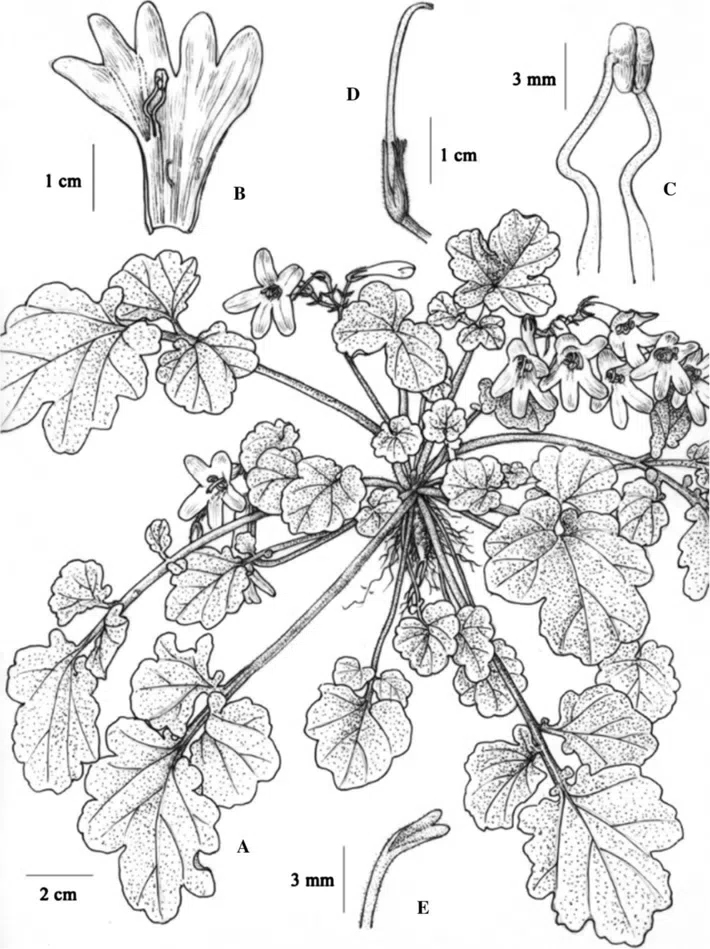
FIGURE 1. Primulina cardaminifolia Yan Liu & W.B. Xu. A, Habit; B, Corolla opened to show stamens and staminodes; C, Stamens; D, Pistil and calyx; E, Stigma. (Drawn by W.H. Lin from the holotype).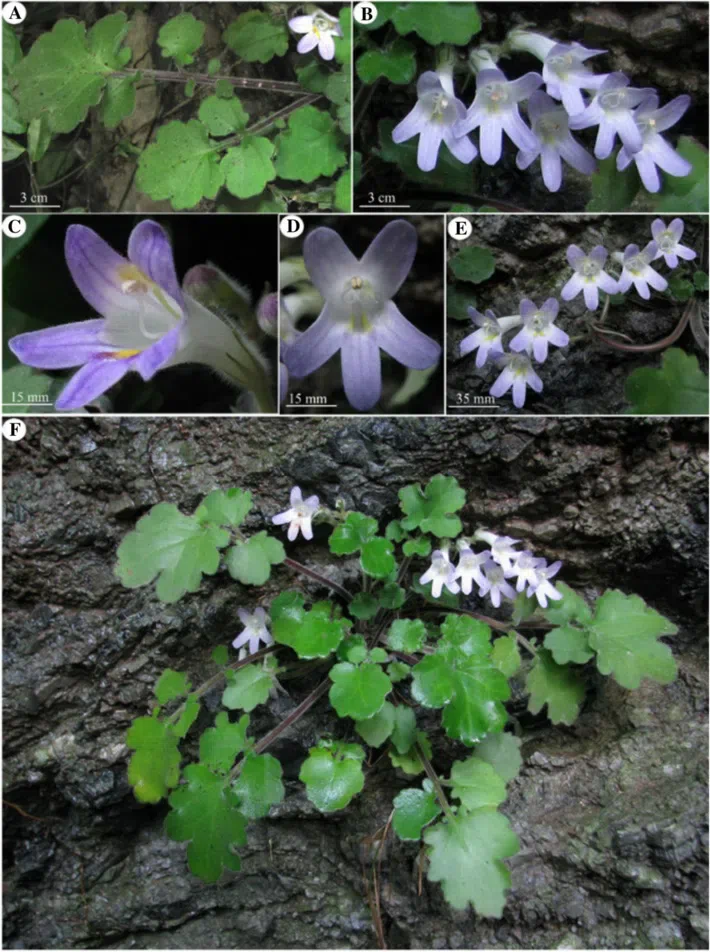
Phytotaxa 131 (1): 29–34.
ABSTRACTOreocharis glandulosa, a new species of Gesneriaceae from southern Yunnan, China, is here described and illustrated. It is similar to O. bodinieri in its corolla shape, but can be easily distinguished by its dense glandular pubescence on the outside of the corolla, the limb distinctly two-lipped, the adaxial lip bilobed to near base, the lobes ovate to triangularovate, the abaxial lip trilobed to the base, the included stamens, the glabrous anther connectives and the ring-like, glabrous, entire or subentire disc.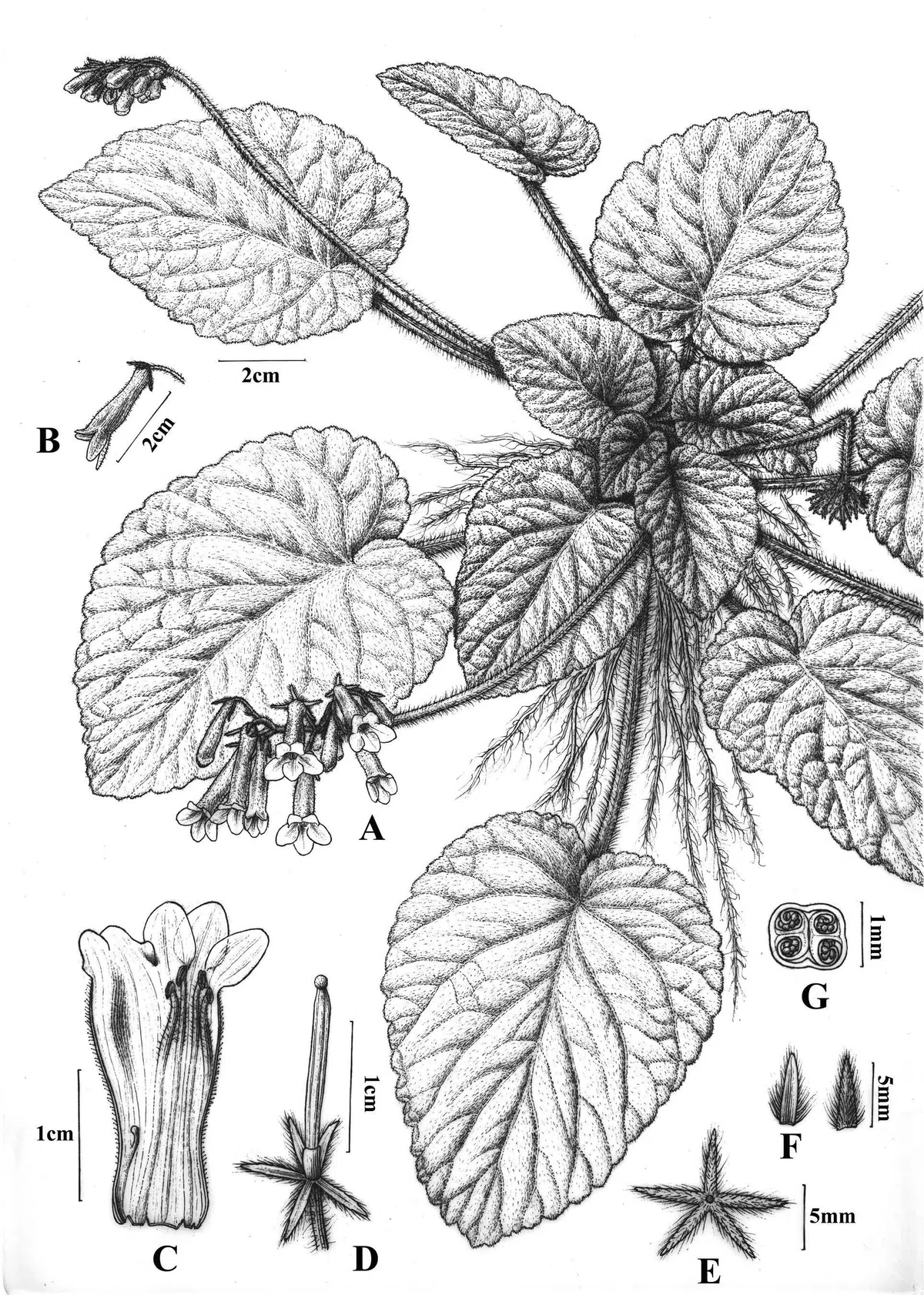
FIGURE 1. Oreocharis glandulosa. A. Habitat. B. Flower. C. Opened corolla. D. Calyx and pistil with disc. E. Calyx. F. Bracts. G. Cross section of ovary. Illustration by Yun-Xi Zhu based on the holotype.
FIGURE 2. Oreocharis glandulosa (from the type locality). A.Habitat. B. Habitat and lateral view of cymes. C. Flower. D. Opened corolla showing stamens. E. Opened corolla, calyx and pistil with disc. F. Calyx. G. Young fruit with disc. Photographs by Yun-Hong Tan & Jian-Wu Li.
Above-mentioned two figures were cited from Tan et al., 2013.
No. 5 Bo Pan, Fang Wen, Tao Deng, Wei-Bin Xu & Shi-Xun Huang: Primulina beiliuensis, a new species of Gesneriaceae from limestone areas in Guangxi, China.
Guihaia 33(5): 591–598.
ABSTRACT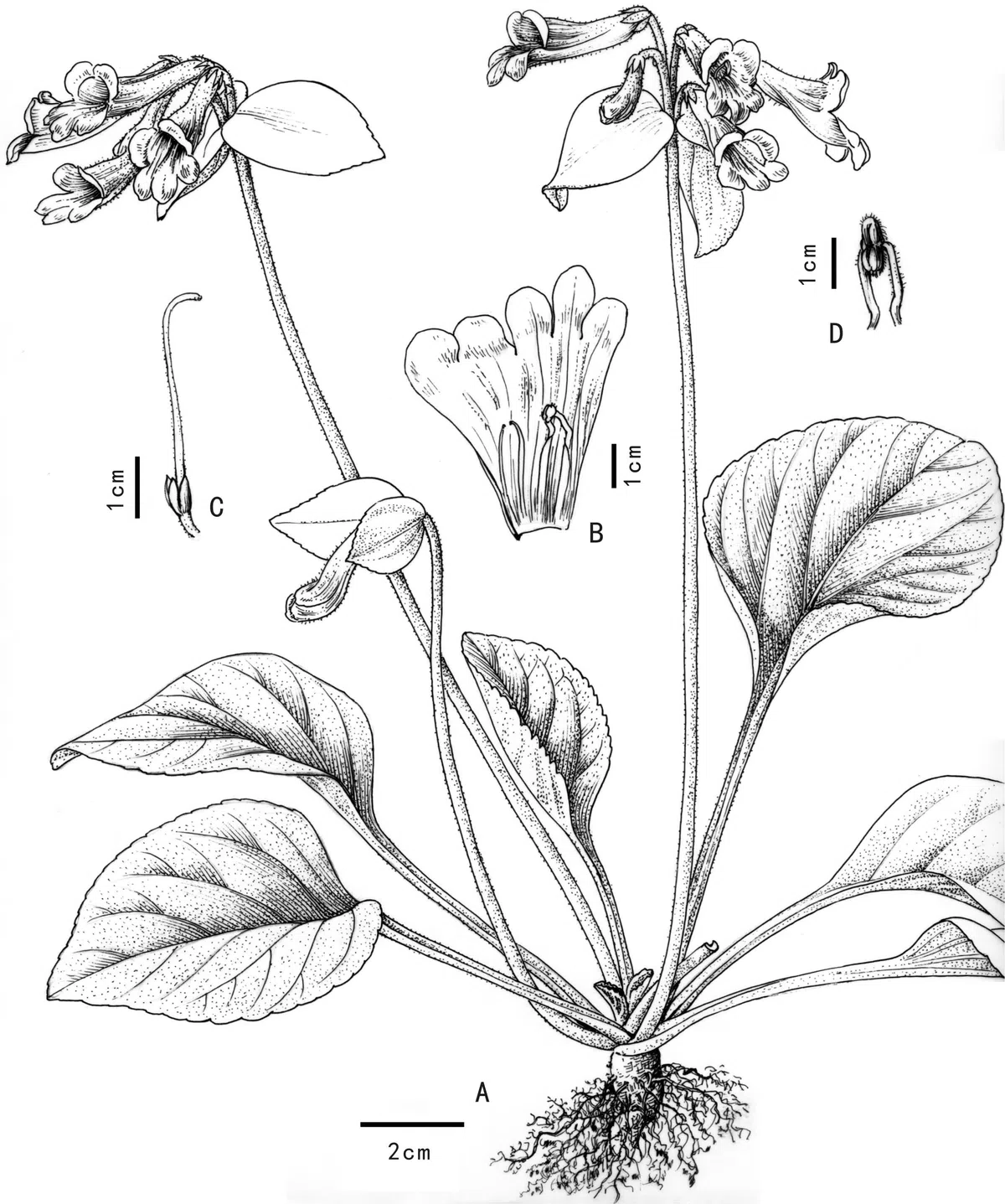
Figure 1. Primulina beiliuensis B. Pan & S.X. Huang, sp. nov. A. Habit; B. Opened corolla with stamens and staminodes; C. Pistil; D. Stamens [Drawing LIN Wen-Hong].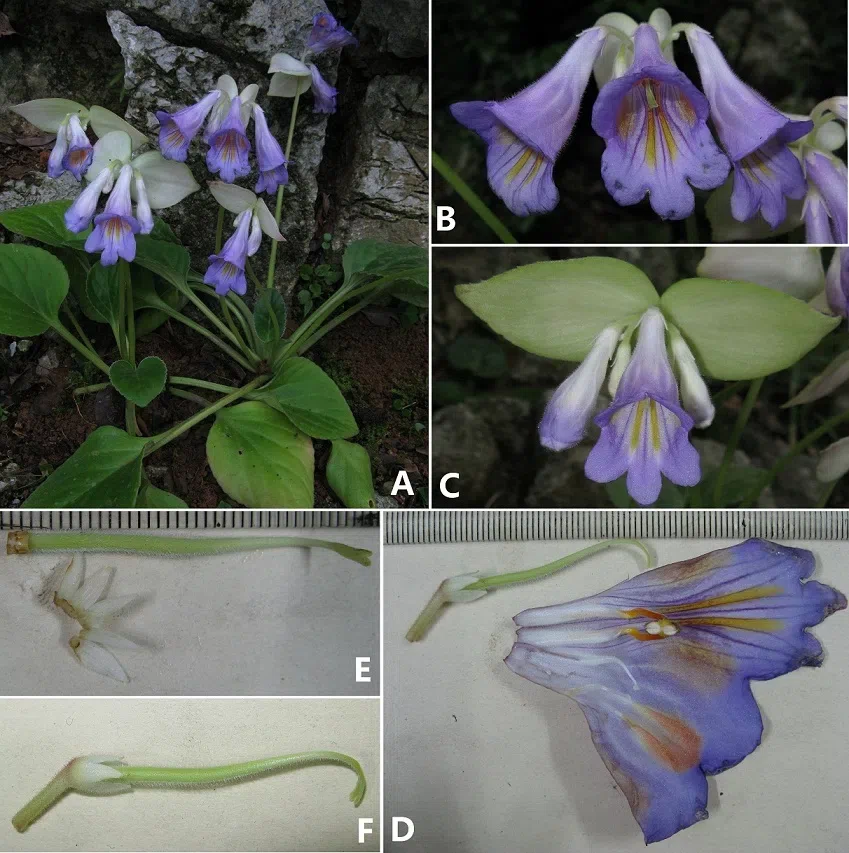
Figure 2. Primulina beiliuensis B. Pan & S.X. Huang, sp. nov. A. Habit with flowers; B. Cyme; C. Flowers and bracts: D. Opened corolla with stamens and staminodes; E. Opened calyx lobes and pistil; F. Pistil and stigma.
Above-mentioned figure 1 was cited from Pan et al., 2013.
No. 6 Zu-Lin Ning, Jing Wang, James F. Smith & Ming Kang: Primulina qingyuanensis (Gesneriaceae), a new species from limestone areas in Guangdong, China.
Phytotaxa 137 (1): 48–52.
ABSTRACT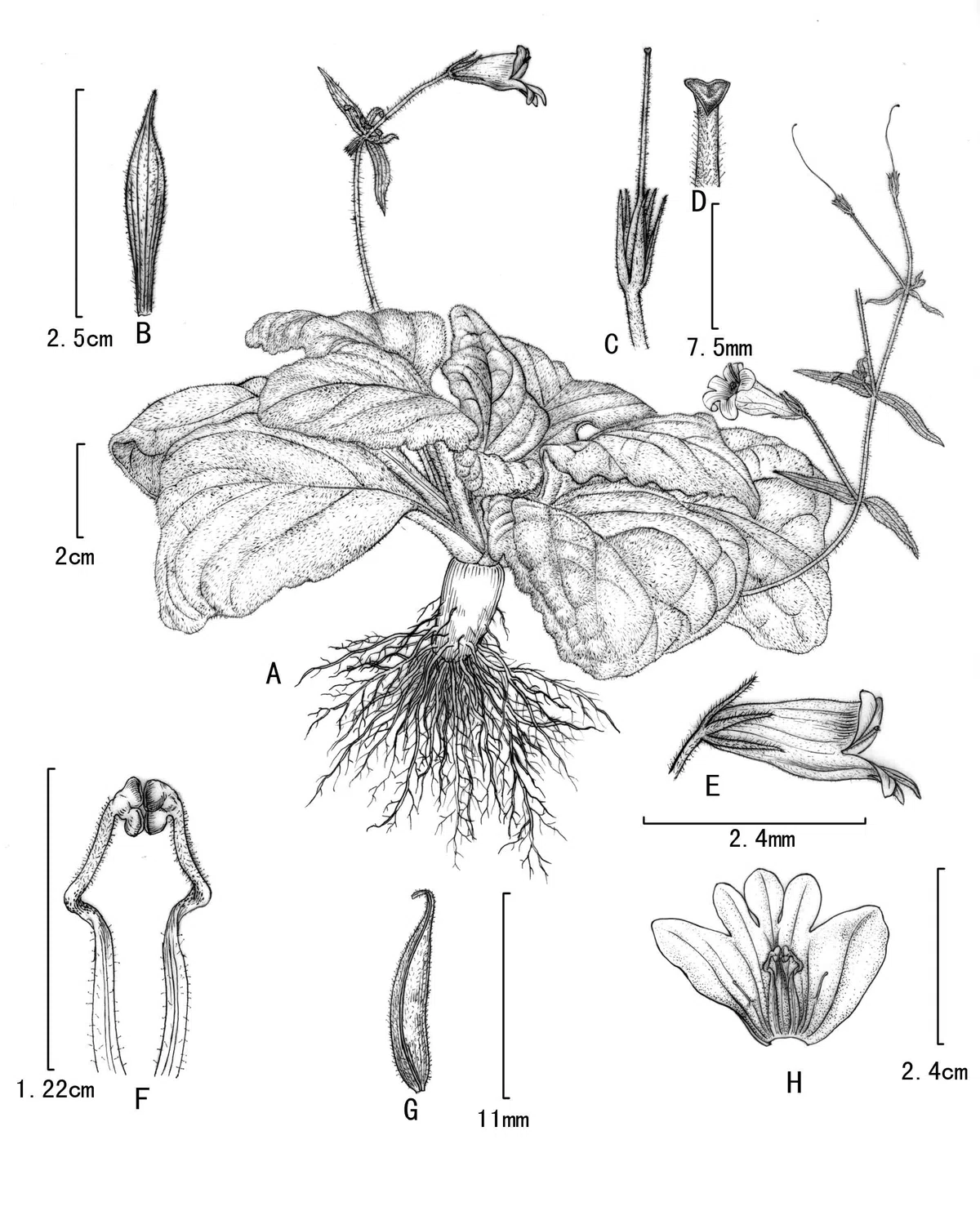
FIGURE 1. Primulina qingyuanensis. A. Habit. B. Bracts. C. Pistil. D. Stigma. E. Flower side view. F. Stamens. G. Capsule. H.Corolla opened showing stamens and staminodes. Illustration by Yun-Xiao Liu, based on the holotype.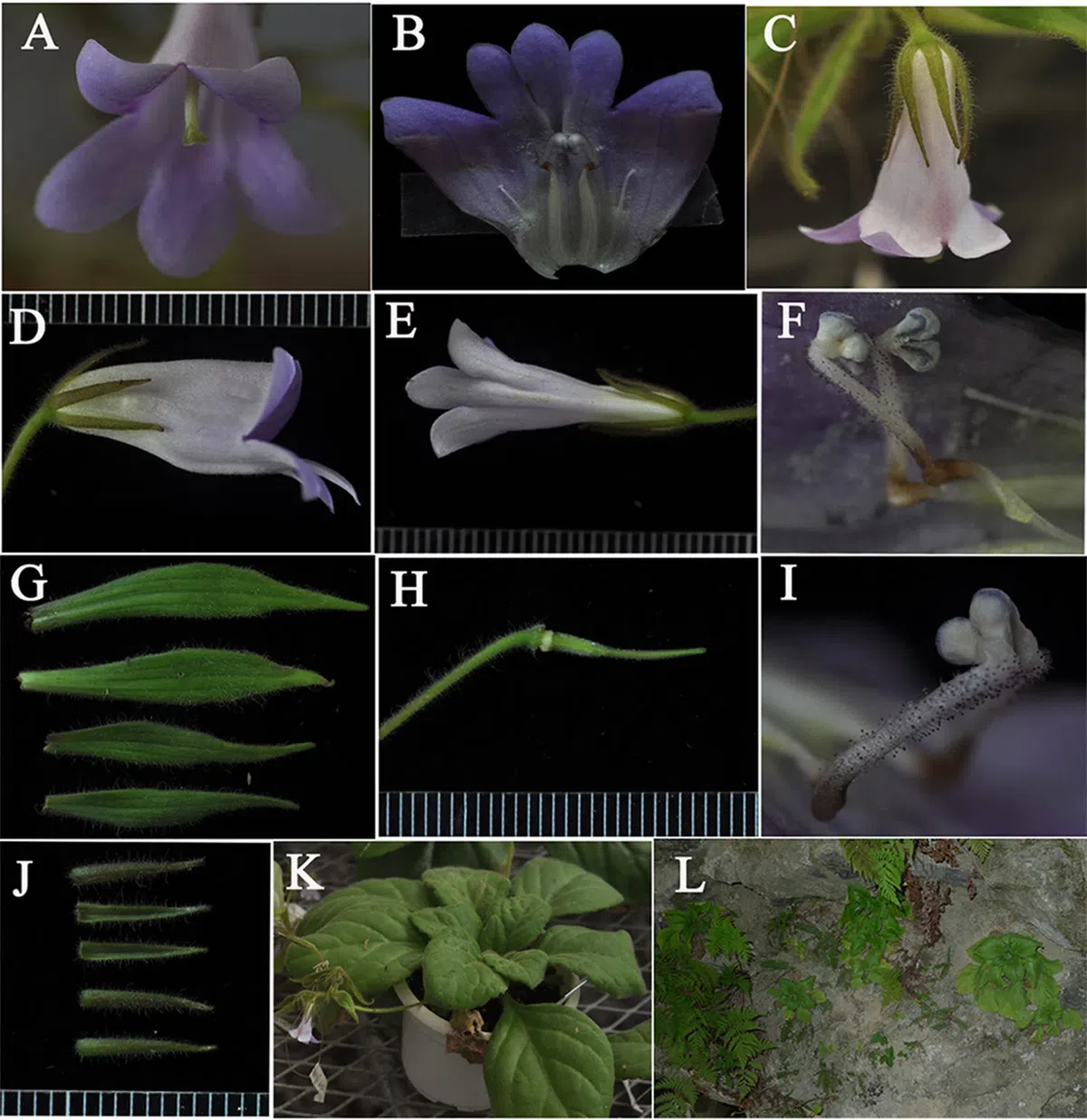
FIGURE 2. Primulina qingyuanensis. A. The frontal view of flower. B. Corolla opened showing stamens and staminodes. C. Flower abaxial view. D. Flower side view. E. Flower adaxial view. F. Stamens side view 1. I. Stamens side view 2. G. Bracts. H. Pistil. J. Calyx. K. Plant cultivated SCBG(South China Botanical Garden). L. Habit.



